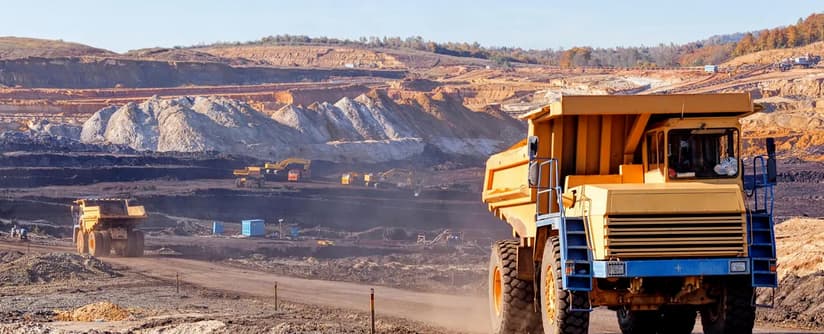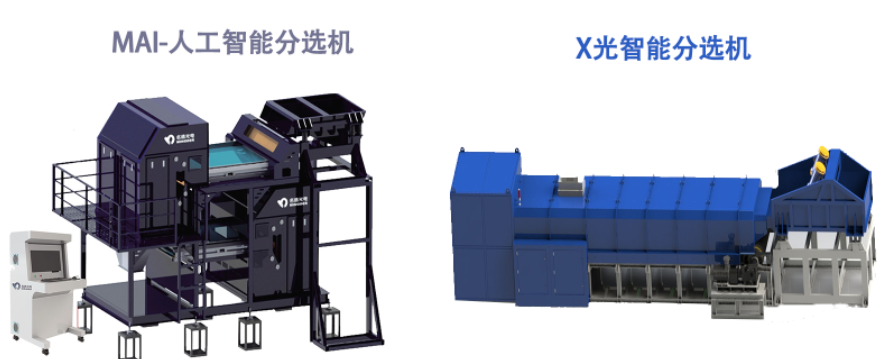Subscribe to our newsletter and always be the first to hear about what is happening.
Conventional beneficiation and artificial intelligence separation of nonferrous metal ores
Nov 09, 2022Non ferrous metals refer to all metals except iron and iron base alloys, chromium and manganese. They are also divided into five categories: nonferrous heavy metals, nonferrous light metals, rare metals, precious metals and semi metals. Common nonferrous metals include copper, lead, zinc, aluminum, vanadium, tungsten, lithium, gold, silver, silicon, rare earth, etc. Non ferrous metals are basic materials for national economic development, such as aerospace, automobile, machinery manufacturing, power, communications, construction Most industries such as household appliances are based on nonferrous metal materials.
The distribution of nonferrous metals in China is more in the south than in the north, mainly in the Yangtze River basin. The ore deposits are mostly divided into blocks and belts in spatial distribution. Non ferrous metals are formed in the process of magma cooling, and there are many ways such as gravity, replacement, recrystallization, and sublimation. Most of them occur in fault fracture zones, magmatic rocks, or contact inner and outer zones, fold cores. In terms of mineralization, magmatic rocks are important factors for nonferrous metal mineralization.
Nonferrous metal beneficiation is based on the difference of physical and chemical properties of different ores. After crushing and grinding of raw ores, mineral processing technology is used to separate minerals from gangue to remove or reduce harmful impurities. Metal products are produced after smelting. Domestic beneficiation processes mainly include gravity separation, magnetic separation, flotation and electric separation, such as gravity separation of copper, lead, zinc, etc; Magnetic separation of sulfide ores; Flotation of gold, silver, copper, lead, zinc, molybdenum, etc; Separation of scheelite and cassiterite by electric separation, and selection of tantalum niobium ore.

The nonferrous metal ores are mostly multi metal symbiosis, and the nonferrous metal grades in ores are generally low. Only when certain reserves and the lowest industrial mining grade are reached, can they have the value of mining and beneficiation. Generally, smelting a ton of nonferrous metals often requires mining hundreds to tens of thousands of tons of ores.
In the beneficiation process, most raw ores are directly crushed and grinded without pre throwing waste tailings, resulting in large ore handling capacity, limited production capacity, high energy consumption, high cost, large tailings handling capacity, and large environmental impact of the gravity and magnetic levitation electric separation process, reducing the economic benefits of the mine. However, AI separation can make use of the difference in ore surface characteristics and imaging differences to directly pre dispose the waste tailings, enrich the grinding ore grade, reduce the cost of grinding, beneficiation electricity, reagents, etc. In terms of reducing energy consumption, improving production, increasing benefits, and building smart and green mines in mine beneficiation, AI separation has a wide application space and value for industrial and mining enterprises to enrich and pre dispose the waste.
Conventional beneficiation process and flow of non-ferrous metals
The vast majority of non-ferrous metals are beneficiated by flotation method, a small part by magnetic separation and gravity separation, and some by chemical or electric separation. The existing mineral processing processes are all based on the physical or chemical characteristics of minerals to dissociate, so as to achieve the purpose of selecting qualified concentrates.

In the flotation method, the raw ore is broken and grinded to fully separate the minerals. With the help of reagents, the useful minerals are attached to the bubbles and the useless minerals are left in the pulp to achieve the purpose of separation. The conventional process of "one roughing, two sweeping and three cleaning" is adopted for flotation separation. Such as chalcopyrite, galena, spodumene, etc.
The magnetic separation method uses the magnetic principle of minerals and relies on magnetic fields to distinguish the minerals with strong magnetism, medium magnetism and weak magnetism. For example, chalcopyrite and wolframite are separated from gangue by magnetic separation.
By gravity separation, some non-ferrous metals have large density, and the specific gravity of minerals and gangue varies greatly. When mineral particles with different specific gravity move in the same medium, they are loosened by gravity, medium resistance, etc., so as to achieve the goal of mineral separation. Such as wolframite, zircon, cassiterite, etc.
The electric separation method mainly uses the different conductivity of minerals and gangue to separate minerals through high voltage electric field. Such as the separation of scheelite and cassiterite, and the separation of tantalum niobium ore and garnet.
In chemical method, there are chemical differences between minerals and components. Solid metal minerals are dissolved into liquid through acid, ammonia and other leachants, such as copper ore in malachite. Copper sulfate solution is obtained by soaking in dilute sulfuric acid. Enriched copper can be obtained by replacing copper ions with iron ions.
In a word, most nonferrous metals have low grade in nature as a whole. Only through crushing grinding floating magnetic gravity electrochemical method can minerals be enriched. However, the tailings waste a lot of electricity and reagents due to the above processes, resulting in high selection costs.
Artificial intelligence and X-ray intelligent sorting system
Mingde artificial intelligent sorter and X-ray intelligent sorter are two series of products developed with great concentration through technical accumulation and advantages, combined with the difficult problems of separation and beneficiation in industrial and mining enterprises. It is applicable to most nonferrous metals, ferrous metals, nonmetals, and others such as coal gangue and solid wastes. It can discard tailings, enrich ore grade, reduce grinding and dressing costs, and increase economic benefits of industrial and mining enterprises.

In the flotation method, the raw ore is broken and grinded to fully separate the minerals. With the help of reagents, the useful minerals are attached to the bubbles and the useless minerals are left in the pulp to achieve the purpose of separation. The conventional process of "one roughing, two sweeping and three cleaning" is adopted for flotation separation. Such as chalcopyrite, galena, spodumene, etc.
The magnetic separation method uses the magnetic principle of minerals and relies on magnetic fields to distinguish the minerals with strong magnetism, medium magnetism and weak magnetism. For example, chalcopyrite and wolframite are separated from gangue by magnetic separation.
By gravity separation, some non-ferrous metals have large density, and the specific gravity of minerals and gangue varies greatly. When mineral particles with different specific gravity move in the same medium, they are loosened by gravity, medium resistance, etc., so as to achieve the goal of mineral separation. Such as wolframite, zircon, cassiterite, etc.
The electric separation method mainly uses the different conductivity of minerals and gangue to separate minerals through high voltage electric field. Such as the separation of scheelite and cassiterite, and the separation of tantalum niobium ore and garnet.
In chemical method, there are chemical differences between minerals and components. Solid metal minerals are dissolved into liquid through acid, ammonia and other leachants, such as copper ore in malachite. Copper sulfate solution is obtained by soaking in dilute sulfuric acid. Enriched copper can be obtained by replacing copper ions with iron ions.
In a word, most nonferrous metals have low grade in nature as a whole. Only through crushing grinding floating magnetic gravity electrochemical method can minerals be enriched. However, the tailings waste a lot of electricity and reagents due to the above processes, resulting in high selection costs.
Artificial intelligence and X-ray intelligent sorting system
Mingde artificial intelligent sorter and X-ray intelligent sorter are two series of products developed with great concentration through technical accumulation and advantages, combined with the difficult problems of separation and beneficiation in industrial and mining enterprises. It is applicable to most nonferrous metals, ferrous metals, nonmetals, and others such as coal gangue and solid wastes. It can discard tailings, enrich ore grade, reduce grinding and dressing costs, and increase economic benefits of industrial and mining enterprises.